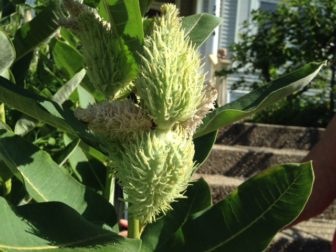Following the focus on yard maintenance in Maplewood in August — surrounding resident Alice Hezel’s yard full of milkweed — Maplewood’s sustainability commission on Tuesday heard a presentation of some other city ordinances on yard maintenance, and discussed ways Maplewood could promote and educate on native plants.

Jean Ponzi, Green Resources Manager for the EarthWays Center at the Missouri Botanical Garden, presented ordinances from Creve Coeur and Chesterfield, which are more specific about the native plants that are allowed than Maplewood’s.
- Woman won’t be jailed for weeds violation: city of Maplewood
- Maplewood couple, city see sunflowers differently
A commission member suggested Maplewood could lead the way in educating on native plants, including putting together a packet that could be distributed to residents during occupancy inspections. The information could also be in the city website in a helpful and actionable way.
The commission discussed having the Audubon Society work with Maplewood residents interested in native landscaping, and organizing a yearly walking tour of yards with native plants. They thought maybe five to 10 residents could be part of a pilot program.


This is an excellent article. Nice to read about a proactive approach to governance here in Maplewood.
I find that Monarch Butterflys like Butterfly Weed, which I find more attractive than milkweed. The Butterfly Weed came up as a volunteer for a few years.
The butterflies do like the butterfly weed. However they need the milkweed as a host plant for their caterpillars. They only eat milkweed.
The Maplewood Public Library began promoting native plants this year with two flower beds designed with help from the Pollinator Project at the Botanical Garden
Wonderful idea. Shows you how disfunctional the Maplewood government and city personnel are.
Would love to learn….where do we sign up
Where do we sign up?
To the individual who thinks people PLANT sumflowers or milk weed on purpose, please do a little research on what birds and pollinators are and their purpose on this planet. I have NEVER planted a milk weed or a sunflower yet I am blessed to have a dozen or so every year. I am thrilled to hear this news of native plant talks!
It would be interesting to know if they recommended tall plants. I see tall plants in folks yard and wonder if they attract other bugs such as mosquito’s. Also, are some a fire hazard. Especially in the winter when plants go dormant.
When the plants are dormant, they are repositories for many of our native bees, some which are becoming endangered There are also homes for butterflies who are wintering over. So keeping the native plants tall is a positive thing.
As far as mosquitos, perhaps, although in my yard I find a lot of mosquitos in the vines the surround my property.
I had the St. Louis Audubon Society come to my house earlier this year to help me plan a native garden. They spent two hours analyzing my site and talking about what I wanted and then sent me a very detailed report on which native plants would work in each location in my yard and what benefits they would bring (feeding birds, hosting caterpillars, etc.). The program is called Bring Conservation Home and only cost $25. I finished my backyard this year and will convert my front yard next year. If we all got in on this, we could really transform the city.
Wonderful! Thank you, Jonathan!
Awesome!
I am so glad to see Maplewood taking steps to promote and educate about native plants, they are so important to the ecosystem and with some information they can be more widely accepted. There are ways t0 make native plantings more formal looking and intentional. My yard is 100% natives, I live on the edge of STL City bordering on Richmond Heights.